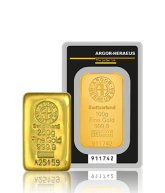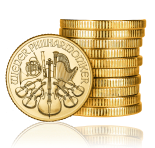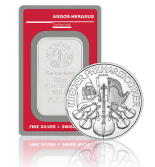Central bank purchases continue to push gold prices to new highs, but the surge in interest from investors and the rate cuts on the horizon mean the rally isn’t overdone, according to a new report from Geneva-based wealth management firm Union Bancaire Privée (UBP).
The analysts noted that there were several drivers behind the powerful rally last month, which took gold to a string of all-time highs, most recently well above $2,200 per ounce.
“First, inflows towards the financial gold market (XAU/USD) surged, and there was a notable increase in long futures positioning, suggesting that institutional investors had increased their exposures towards the yellow metal,” they wrote. “Second, central banks continued to aggressively purchase physical gold and the latest data show heavy purchases since the beginning of the year of around 40 tonnes per month.”
UBP believes these central bank purchases are having “a material impact on the market,” noting that the World Gold Council believes 15% of gold’s price is due to ongoing central bank buying. “This trend is likely to continue over the coming months and years, as central banks move to increase their gold reserves,” they said.
The third factor is the impact of retail investors increasing their stakes in gold ETFs. They pointed out that while most of this happened after the lion’s share of gold’s gains, it still bodes well for gold prices going forward. “This widening of the investor base implies that this move has further to run,” they wrote. “We note that retail investors remain underinvested compared with historical averages.”
Central banks will also begin driving gold demand higher through cuts to their benchmark interest rates, which are expected to begin in the coming months. “The latest indications are that central banks will have a front-loaded rate-cutting cycle, meaning that nominal rates will decline substantially this year,” they said. “The coincidental and rapid decline in global inflation dynamics, combined with a front-loaded rate-cutting cycle from many of the major central banks, is a highly constructive development for gold. This explains the rapid upward move to levels above USD 2,200 per oz.”
Looking ahead at the second half of 2024, UBP analysts have identified two additional factors which could drive gold higher still. “First, the US presidential election campaigns will likely serve to highlight excessive debt levels in the US, and increasing concerns about US fiscal sustainability will be beneficial for gold in our view,” they wrote. “Second, we think that geopolitical risks will remain elevated and any worsening in relations between the major powers will give an upside skew to gold prices.”
The only reservations they have about gold’s potential for further gains are related to the speed and scale of gold’s move to date. “[Gold] currently trades with an enormous premium to ten-year Treasury Inflation-Protected Securities (TIPS) yields, which we view as a proxy for forward-looking real interest rates,” they said. “This large premium could contract if TIPS yields fall over the coming months, which is feasible if the Federal Reserve begins to cut interest rates. This means that forthcoming Consumer Price Index (CPI) prints in the US will be highly important. If CPI readings show some moderation on a monthly basis, we can expect that gold will trade at or slightly higher than current levels.”
“Overall, we maintain a constructive stance on gold, and any dip below levels of around USD 2,100 per oz is a strong buying opportunity in our view,” they wrote. “Over the longer term, a move towards levels of around USD 2,300 per oz is feasible.”
Spot gold last traded at $2,234.94 per ounce at the time of writing, up 0.07% on the day but only $30 below last week’s all-time high.







